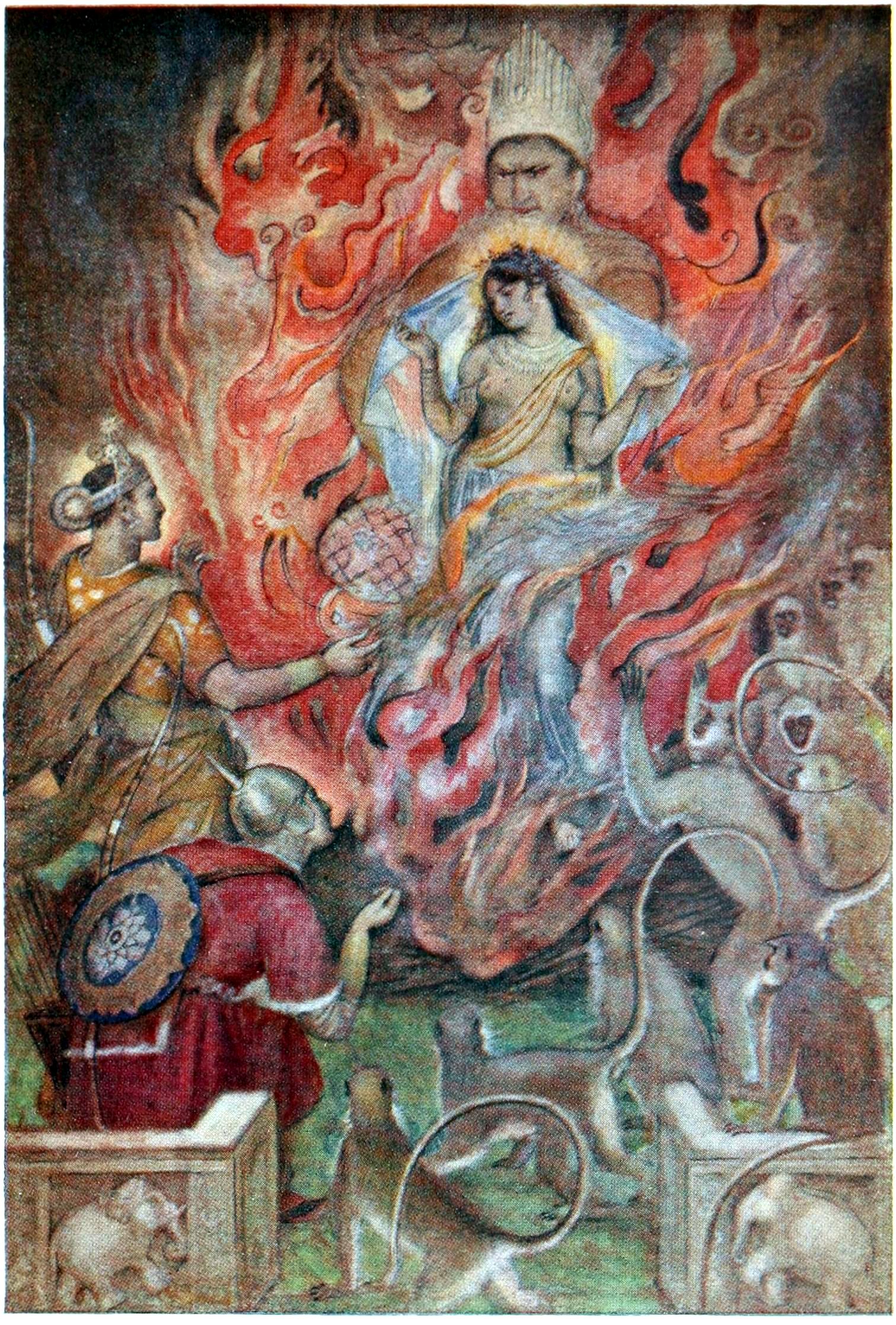If I thought the stories about Shurpanakha were creative...wow. The ones for Sita are amazing. I actually wish they were all longer; it seemed like as soon as I grasped the central concept at play in each version, the story was over.
Each Sita character, each story in Part C really took on its own form. There's a lot of playing around with the idea of many Ramayanas, many versions of the tale and of its figures. That's the main thing I took away from "Game of Asylum Seekers," that it's like each iteration of the epic is a new version of an impersonal game Sita is trying to survive/win. Then in "Sita's Descent," Sita tries to rewrite her story...and realizes that such actions as she wants to take are not within her character after all.
the god of fire and Sita
Evelyn Paul, 1911 (Wikimedia Commons)
"Day of the Deer" was a bit different. It goes along the same route as many of the Ramayana stories I read by other students in this class, with Ravana and Sita having some kind of other relationship backstory beyond the kidnapping episode. In this case, it was that Sita was supposed to bring the destruction of Rama and his kind, who have oppressed the earth's people, her people, for generations.
"Weak Heart" was interesting, mostly for the perspective on Rama's internal thoughts and motivations. It reminded me a lot of Draupadi's last thoughts of her eldest husband in The Palace of Illusions, that in his devotion to spirituality and correct living he will gain entrance to the realm of the gods, but in the meantime he'll have to leave behind all the people he loves. Rama is much the same in this portrayal of him. To become God, he must completely reject human feelings. I think most of us would question if such sacrifices are truly worth it, if gaining a measure of immortality is actually better than retaining one's humanity.

No comments:
Post a Comment